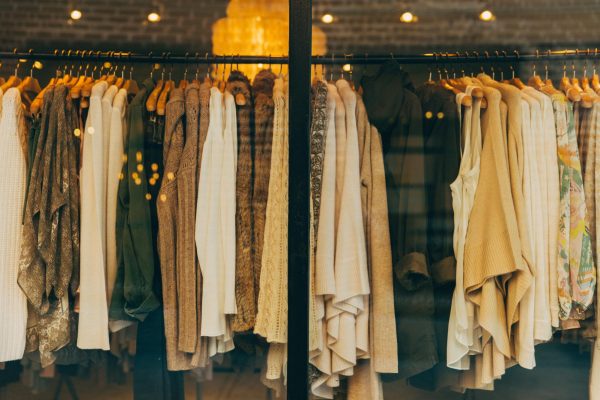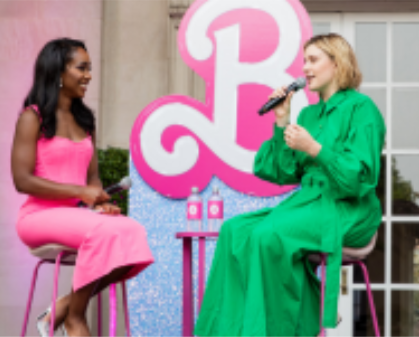Eco-friendly brands reduce, reuse and recycle to put an emphasis on sustainability in the fashion industry
Creative Commons Photo Courtesy of Copenhagen Fashion Summit
A model at the 2014 Copenhagen Fashion Summit walks in the Sustainable Runway Show.
January 25, 2019
Day in and day out, garment workers show up to work for very little pay. Major clothing corporations not only fail to provide their employees with proper compensation, but also harm the environment. With these factors in mind, millennials have started to question whether their #ootd is really worth the compliments.
Millennials have had a large impact on the success of brands and trends. They popularized canvas totes instead of plastic bags, to both repurpose fabrics and create sustainable fashion. According to Forbes, the sustainable fashion trend involves using organic and recyclable materials to lessen the negative impact of clothing manufacturing on the environment. Brands all over the world have adapted their business model to follow the trend, and consumers seem to support it.
Maria Rugolo of NPD Group said that consumers from ages 18-34 are interested in purchasing clothing that is safe for animals and the environment. This demographic tends to support sustainable fashion since they grew up in world that’s more aware of clothing production’s harmful effects, Rugolo said.
Sustainable fashion is usually more minimalist for the same reasons. Producers avoid using harmful dyes and chemicals to reduce the amount of toxic waste, and many common materials are unable to be made eco-friendly, such as sequins.
Purchasing clothes from eco-friendly brands assists in conserving natural resources for reusable fashion. According to The Blissful Mind, an eco-friendly guide, maintenance of clothing from these natural resources is also safer for the environment because they are typically hand wash only.
As an eco-friendly brand, H&M was one of the first companies to launch a clothing recycling program at a large scale. They aimed to recycle clothes to minimize the effect their production has on natural resources.
“Today, we see a fashion industry that weighs heavy on natural resources, and it simply cannot carry on in the same way as before,” their website said. “Plus, far too much textiles end up in trash bins and landfills – we’re talking thousands of tonnes, regularly thrown away with household waste.”
To participate, consumers drop off clothing in any state, at a garment box in H&M, and cashiers reward them with a voucher. In 2017 alone, H&M collected more than 17,771 tonnes of textiles, which is equivalent to 89 million t shirts.
Although beneficial for the environment, this repurposing of clothes and non-harmful materials come at a cost. Junior Abbey Reisler of Ocean said she supports the trend, but not the price tag.
“I think it’s a good idea in theory,” Reisler said. “But the cost of the products can turn people, like myself, away.”
Unlike Reisler, junior Riley Rademacher of Wall has purchased sustainable pieces from brands like Patagonia and H&M. She said that while sustainability isn’t the only factor she considers when purchasing clothes, it is something she appreciates.
“Personally, I find eco-friendly to be an added plus,” Rademacher said. “If the item is cute and sustainable, then I am all in!”















